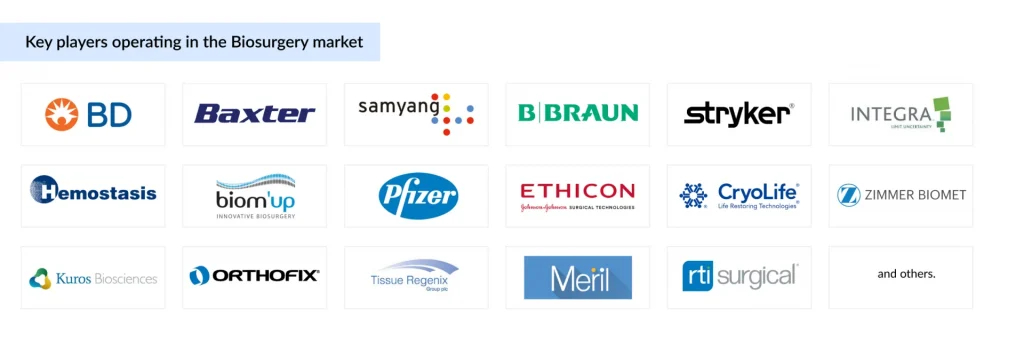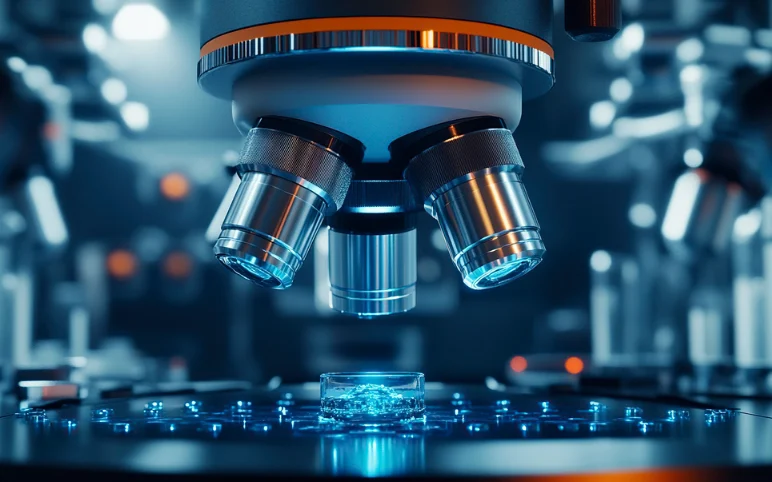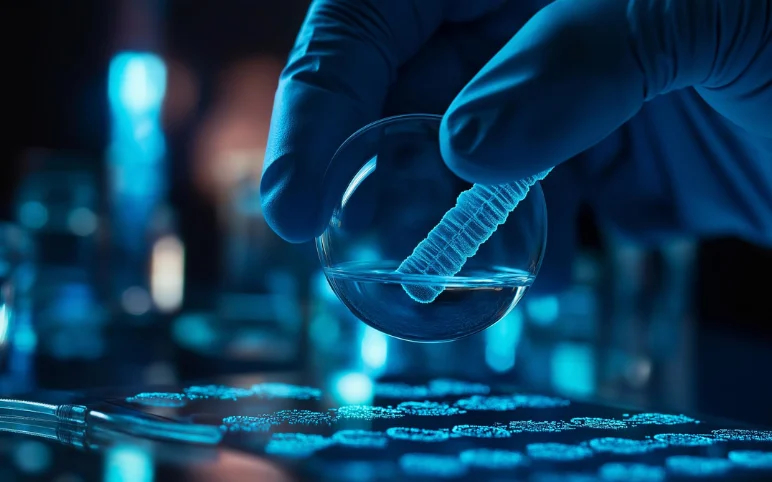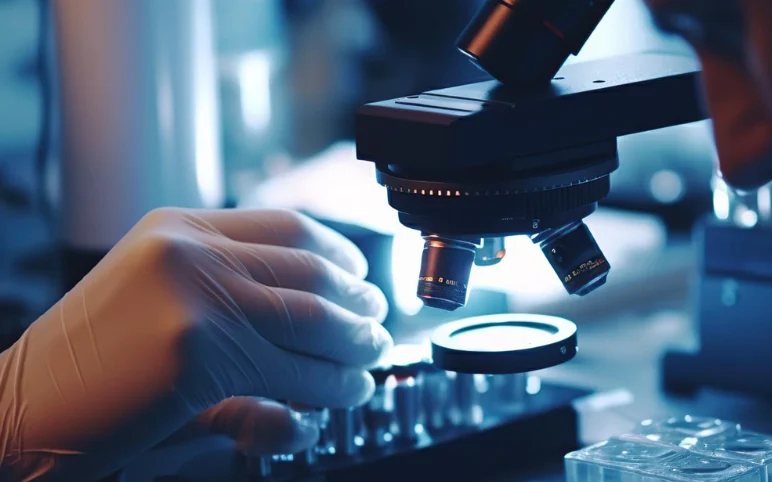Top Biosurgery Applications Revolutionizing Modern Medicine
Jul 23, 2025
Table of Contents
In today’s surgical landscape, precision and biological integration are becoming just as important as technical skill. Biosurgery represents this shift, a field at the intersection of Medtech and Diagnostics, where biocompatible materials and regenerative techniques are used to improve surgical outcomes. From sealing tissues to promoting faster healing and reducing complications, biosurgery is no longer just an add-on but a core component of modern surgical strategy.
With innovations like fibrin sealants, collagen scaffolds, and cell-based therapies, biosurgery now plays a critical role across disciplines, from orthopedics and neurosurgery to cardiovascular and reconstructive procedures. What’s driving this momentum is the demand for minimally invasive solutions, faster recovery, and fewer post-operative risks.
Downloads
Click Here To Get the Article in PDF
Recent Articles
- Smith+Nephew’s Hip Arthroplasty System; Mammotome Launched the HydroMARK Plus Breast Biopsy Site ...
- Gilead Sciences Introduces Sovaldi: A Potent Hepatitis C Treatment
- Bausch + Lomb’s LuxSmart Intraocular Lenses; Movair’s Luisa Life Supporting Ventilato...
- Bausch + Lomb and Heidelberg Engineering Introduced SeeLuma; Oxford Nanopore and bioMérieux Signs...
- GE HealthCare Launched CardioVisio; J&J’s Elita Laser Correction Platform; ICU Medical’s Plum...
According to DelveInsight, the global biosurgery market is poised for significant growth, projected to expand at a CAGR of 9.23% between 2025 and 2032. Leading companies such as BD, Baxter, B. Braun Melsungen AG, Stryker, and Integra LifeSciences are pushing innovation forward.
In this blog, we’ll break down the top biosurgery applications reshaping clinical practice and what they mean for the future of surgical care.
Understanding the Scope and Importance of Biosurgery
Biosurgery is not a singular intervention but an evolving portfolio of biological and synthetic innovations designed to support or enhance surgical outcomes. These include hemostatic agents to control bleeding, sealants to close wounds or prevent leaks, adhesives to bond tissues, and regenerative matrices that enable tissue healing and remodeling.
The scope of biosurgery extends across a wide range of medical specialties, from general surgery to highly specialized fields like neurosurgery, oncology, cardiovascular surgery, and orthopedics. In high-risk surgeries, where precision and post-operative recovery are critical, biosurgery solutions often tip the balance toward success.
Moreover, the increasing focus on value-based healthcare, where outcomes, patient satisfaction, and recovery time matter more than procedural volume, is positioning biosurgery as a strategic tool. Hospitals and surgeons are adopting these solutions not just for their clinical benefits, but for their ability to reduce complications, shorten hospital stays, and lower overall healthcare costs.
With this broad and growing utility, let’s explore how biosurgery is transforming individual therapeutic areas
Hemostats: Controlling Bleeding with Advanced Biosurgical Solutions
Hemostats are a cornerstone of the biosurgery landscape, offering critical solutions for controlling bleeding during a wide range of surgical procedures, particularly in cardiovascular, orthopedic, and general surgery. These biosurgical agents, available in powders, gels, foams, and patches, accelerate clot formation and stabilize bleeding sites, significantly reducing intraoperative complications and improving surgical outcomes.
Today’s most advanced hemostatic products, such as thrombin-based sealants and oxidized cellulose matrices, are engineered to complement the body’s natural clotting cascade, ensuring both rapid action and high biocompatibility. This is especially vital in complex surgeries like liver resections or trauma cases, where traditional mechanical methods such as suturing or cauterization may fall short.
According to DelveInsight, the global hemostats market was valued at USD 3.64 billion in 2023 and is expected to grow at a CAGR of 5.72% between 2025 and 2032, reaching USD 5.07 billion by 2032. This growth is propelled by rising surgical volumes, the shift toward minimally invasive procedures, and increasing demand for effective bleeding control.
Industry leaders like Baxter International, Johnson & Johnson, Stryker, Pfizer, Integra LifeSciences, B. Braun Melsungen AG, and BD are driving innovation with next-generation absorbable hemostats and dual-function agents that combine sealing and hemostatic properties. Emerging players such as Hemostasis LLC, GELITA Medical, Mallinckrodt, Cura Medical, Meril Life Sciences, Biom’up, and Beijing Datsing Bio-Tech are also shaping the future of biosurgery by focusing on precision delivery systems, bioactive compounds, and enhanced usability for laparoscopic applications.
With continued R&D and clinical adoption, modern hemostats are transforming surgical care — not only by minimizing blood loss but also by enabling safer, faster, and more efficient interventions.
Soft Tissue Repair: Biosurgical Innovations Enhancing Healing and Recovery
The soft tissue repair market is a pivotal segment of the biosurgery market, focusing on the restoration of damaged muscles, ligaments, tendons, and other connective tissues. Biosurgery has revolutionized this field by introducing biocompatible materials such as collagen-based scaffolds, fibrin sealants, and growth factor therapies that promote natural tissue regeneration.
These advancements are particularly impactful in orthopedic surgeries, sports medicine, and reconstructive procedures, where soft tissue injuries are common. For instance, biosurgical products like tissue matrices enhance the body’s ability to repair soft tissue by providing a framework for cell growth, reducing scar formation, and improving biomechanical stability.
In procedures like rotator cuff repair or hernia reconstruction, these materials integrate seamlessly with the body, minimizing rejection risks and accelerating recovery. The soft tissue repair market also benefits from innovations in minimally invasive techniques, which reduce surgical trauma and align with the broader biosurgery goal of enhancing patient outcomes. As the biosurgery market continues to grow, advancements in soft tissue repair are addressing complex challenges, such as chronic wounds and large-scale tissue defects, offering solutions that are both effective and aligned with the body’s natural healing processes.

Bone Grafting for Dental Implants: Enhancing Stability with Bone Graft for Tooth Implant
Bone grafting is a vital application within the biosurgery ecosystem, particularly in the realm of restorative dentistry where jawbone integrity is essential for the success of dental implants. Often referred to as bone graft for tooth implant or bone graft for dental implant, this procedure enables the placement of implants in patients with insufficient bone volume, a common complication stemming from periodontal disease, trauma, or long-term tooth loss.
Biosurgery has revolutionized dental bone grafting by introducing a variety of grafting materials such as autografts (patient-derived), allografts (donor-derived), xenografts (animal-derived), and synthetic substitutes. These materials act as scaffolds to promote osteogenesis, allowing the patient’s natural bone to regenerate and integrate seamlessly with the graft. Advanced biosurgical solutions now incorporate bioactive compounds such as bone morphogenetic proteins (BMPs) and stem cell-enriched matrices, dramatically improving healing times and implant stability.
According to DelveInsight, the global bone graft and substitutes market was valued at USD 3,786.25 million in 2024 and is projected to grow at a CAGR of 5.88% from 2025 to 2032, reaching USD 5,957.71 million by 2032. Similarly, the dental bone graft substitutes market is expected to expand at a CAGR of 6.87% during the same period, fueled by rising demand for dental implants, an aging population, and increased awareness of oral health.
Market leaders such as Dentsply Sirona Inc., Zimmer Biomet, Institut Straumann AG, and BioHorizons are at the forefront of innovation, developing next-generation synthetic grafts and customized 3D-printed scaffolds tailored to patient anatomy. Emerging players like MedBone Biomaterials, Noraker, OssDsign, and Southern Implants are also driving disruption with biomimetic materials and growth factor-based regenerative platforms.
As biosurgical technologies advance, bone grafting for dental implants is becoming more predictable, efficient, and accessible, helping clinicians deliver long-lasting, functional, and aesthetically superior outcomes in oral rehabilitation.
Dural Repair: Innovations in Neurosurgical Biosurgery
Dural repair is a critical application in the biosurgery market, essential for neurosurgical procedures involving the dura mater, the protective membrane surrounding the brain and spinal cord. Tears or defects in the dura, often resulting from trauma, tumors, or surgical interventions, can lead to serious complications like cerebrospinal fluid (CSF) leaks, infections, or brain herniation. Biosurgery has revolutionized dural repair by introducing advanced biomaterials, such as collagen-based patches, fibrin sealants, and synthetic dural substitutes, that ensure watertight closure and promote tissue integration. These biosurgical products are designed for biocompatibility, reducing inflammation and enhancing healing while maintaining the structural integrity of the dura.
For example, collagen matrices and hydrogel sealants provide flexible, durable solutions that conform to the complex anatomy of the brain and spine, minimizing postoperative complications. Innovations in the biosurgery market have also led to the development of resorbable dural substitutes, which gradually degrade as the body’s natural tissue regenerates, eliminating the need for additional surgeries.
These advancements are particularly impactful in procedures like craniotomies, spinal surgeries, and Chiari malformation corrections, where precise dural repair is paramount. The biosurgery market’s focus on minimally invasive techniques further enhances dural repair by reducing surgical trauma and improving patient recovery times. As the biosurgery market continues to grow, dural repair remains a cornerstone of neurosurgical innovation, offering safer and more effective solutions for complex neurological conditions.
Nerve Damage Repair: Exploring How to Repair Nerve Damage with Biosurgery
Nerve damage repair stands at the intersection of complexity and innovation within the biosurgery landscape. Addressing conditions that range from peripheral nerve trauma to surgical injury and neurodegenerative disorders, the question of how to repair nerve damage effectively has long challenged clinicians. Traditional approaches have often fallen short in restoring function, but the rise of biosurgical technologies is changing that narrative.
Modern biosurgery enables precise nerve regeneration using advanced materials such as bioengineered nerve conduits, collagen wraps, neurotrophic growth factors, and stem cell-enriched scaffolds. Biocompatible nerve guides, frequently composed of collagen, polyglycolic acid, or synthetic polymers, offer a protective environment for regenerating axons, guiding them across nerve gaps while minimizing scar tissue. Complementary therapies such as nerve growth factor (NGF) and bone marrow-derived stem cells further accelerate axonal regeneration and functional recovery.
In April 2025, Orthocell Limited achieved a significant regulatory milestone with FDA 510(k) clearance for Remplir, a collagen-based nerve wrap designed to enhance nerve repair during surgical procedures. The clearance marks a pivotal moment in the biosurgery market, enabling US commercialization of a product that supports structured nerve healing in complex cases such as brachial plexus injuries and carpal tunnel syndrome.
According to DelveInsight, the global nerve repair and regeneration market was valued at USD 6,497.47 million in 2023 and is projected to grow at a robust CAGR of 9.31% through 2032. This growth reflects rising incidence rates of nerve injuries and a global shift toward minimally invasive, regenerative procedures.
Key players leading innovation in this space include Medtronic, Boston Scientific, AxoGen Inc., Baxter International, and Integra LifeSciences, with emerging biosurgical disruptors such as Orthocell, Checkpoint Surgical, and Polyganics pushing the frontiers of nerve tissue engineering.
As research in biomaterials and neurobiology evolves, biosurgery is poised to redefine the standard of care in nerve damage repair, delivering targeted, patient-specific solutions that restore mobility, reduce pain, and improve long-term outcomes for patients worldwide.
Emerging Trends in the Biosurgery Market: Future Directions and Innovations
The biosurgery market is at the forefront of medical innovation, driven by novel technologies and strategic investments that are reshaping surgical care. A prominent trend is the advancement of hemostatic solutions, exemplified by Dilon Technologies’ HEMOBLAST Bellows, the only FDA-approved powder-form hemostat for managing minimal, mild, and moderate bleeding in procedures like cardiac, general, and orthopedic surgeries.
Bolstered by a USD 9 million growth financing round from JGB Management in June 2025, Dilon is scaling its operations, with HEMOBLAST Bellows now adopted in numerous U.S. hospitals, elevating standards in surgical hemostasis. Another transformative development is the use of intraoperative diagnostic tools, such as Dilon’s MarginProbe, which enables real-time breast cancer margin assessment, reducing re-excision rates by 25% to 80%. A next-generation MarginProbe is awaiting FDA approval by late 2025, promising further improvements in surgical precision. Johnson & Johnson’s Ethizia Hemostatic Sealing Patch, CE Mark-approved in November 2023, addresses bleeding in internal organs, strengthening J&J’s biosurgery portfolio and contributing to its surgery segment’s 3.6% growth in 2023.
The emergence of bioengineered tissue adhesives is also gaining traction, offering stronger and more flexible bonding for wound closure compared to traditional sutures. Additionally, smart biomaterials embedded with sensors are being developed to monitor healing processes in real time, enhancing postoperative care. The integration of artificial intelligence in biosurgery is another frontier, optimizing surgical planning and biomaterial application through predictive analytics.
The market is also seeing growth in emerging economies, particularly in the Asia-Pacific region, where rising healthcare infrastructure and medical tourism in countries like China and India are driving demand, with a projected regional CAGR of 11.04%. These innovations, supported by robust investments and global expansion, are positioning biosurgery for a future of enhanced precision and patient outcomes.

Conclusion
Biosurgery is revolutionizing modern medicine with innovative solutions that address critical needs in soft tissue repair, dental bone grafting, dural repair, and nerve regeneration. By harnessing biocompatible materials and advanced techniques, these applications are enhancing patient outcomes, minimizing recovery times, and making treatments more accessible. From stabilizing dental implants with precise bone grafts to repairing complex nerve damage with cutting-edge conduits, the impact of biosurgery is profound. Industry leaders like Johnson & Johnson, Medtronic, Stryker, Baxter, and Dilon Technologies are driving this transformation, pushing the boundaries of what’s possible in surgical care. As the biosurgery market continues to evolve, it promises a future where biological and surgical advancements seamlessly integrate to improve human health and quality of life.

Downloads
Article in PDF
Recent Articles
- Meet DelveInsight in BioEurope '16
- Beam’s BEAM-302 Earns FDA Orphan Drug Tag for AATD; Incannex’s IHL-42X Moves to Phase III After F...
- Idiopathic pulmonary fibrosis (IPF) – Market Insights, Epidemiology and Market Forecast-2020
- DelveInsight Hiring Analysts and Associate Analysts
- GE HealthCare, DePuy Synthes Announced Collaboration; Eko Health Launched CORE 500 Digital Stetho...



